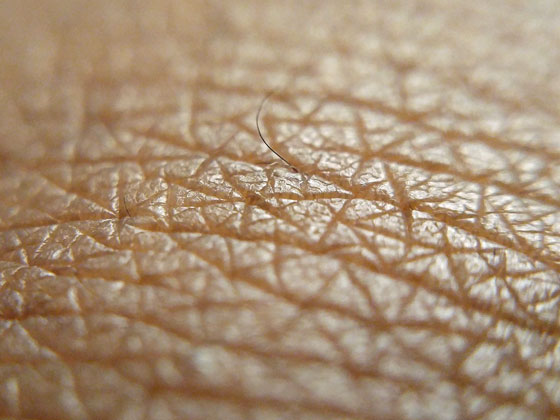A new method for controlling pigmentation in fabricated human skin has been developed by researchers from A*STAR’s Singapore Institute of Manufacturing Technology (SIMTech) and the Singapore Centre for 3D Printing (SC3DP) at Nanyang Technological University.
In their paper, publishing today in Biofabrication, the team show how they utilise 3D bioprinting to control the distribution of melanin-producing skin cells (melanocytes) on a biomimetic tissue substrate, to produce human-like skin pigmentation.
While current engineered skin constructs are successfully used in skin repair and grafting, toxicology, and chemical testing, they lack complex features such as skin pigmentation, sweat glands or hair follicles.
Lead author Wei Long Ng aimed to overcome these challenges in a joint project initiated by SIMTech’s May Win Naing and SC3DP’s Wai Yee Yeong. Wei Long said: “3D bioprinting is an excellent platform for the precise deposition of biomaterials and living cells to make biomimetic skin, in large volumes with great repeatability. However, non-uniform skin pigmentation is often seen, and this remains a huge challenge to be solved.
“Our aim with this project was to use this method to demonstrate the feasibility of making 3D in-vitro pigmented human skin constructs, with uniform skin pigmentation.”
To make the pigmented skin constructs, the team used three different types of skin cells – keratinocytes, melanocytes, and fibroblasts – and a two-step ‘drop on demand’ bioprinting method.
Wei Long Ng explained: “The two-step bioprinting strategy involves the fabrication of hierarchical porous collagen-based structures (that closely resembles the skin’s dermal region), and deposition of epidermal cells such as keratinocytes and melanocytes at pre-defined positions on top of the biomimetic dermal skin constructs, to create 3D in-vitro pigmented human skin constructs.
“When we compared the 3D bioprinted skin constructs to those made using a manual-casting method, we found two distinct differences between the two fabrication approaches – the cell distribution on top of the dermal regions, and the microstructures within the dermal regions. The two-step bioprinting strategy enables the standardised distribution of printed cells in a highly-controlled way, as compared to the manual casting approach.”
He added: “Furthermore, the bioprinting technique allows the manipulation of pore sizes within the 3D collagen-fibroblast matrices, to fabricate hierarchical porous structures that are clearly seen in the native skin tissues. In contrast, tuning the skin microstructure within the 3D collagen-fibroblast matrices using the manual-casting approach is extremely challenging.”
As well as the potential to produce pigment-correct skin grafts, the team’s 3D bioprinting method could also be used to develop skin constructs for toxicology testing and fundamental cell biology research.
